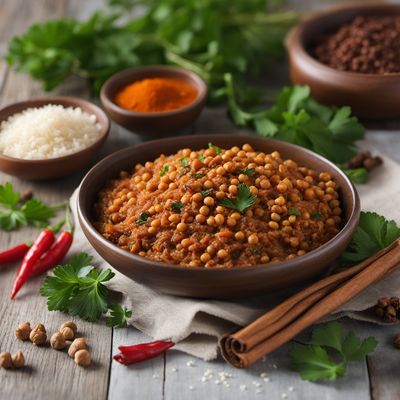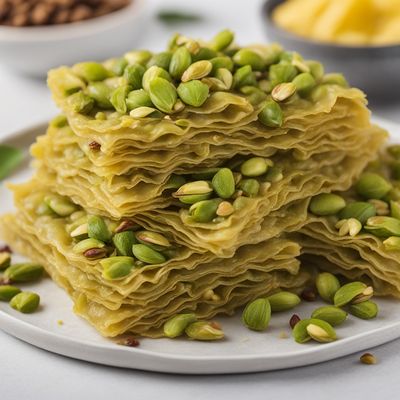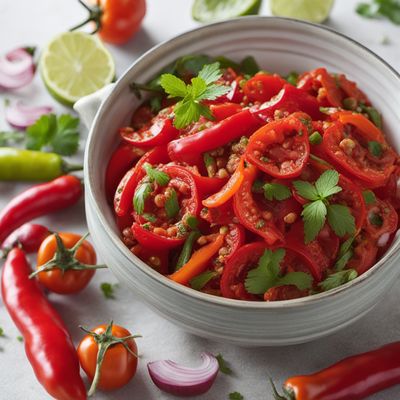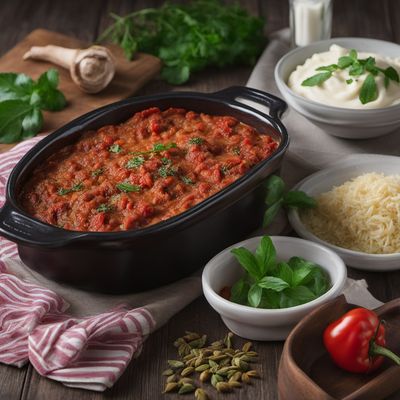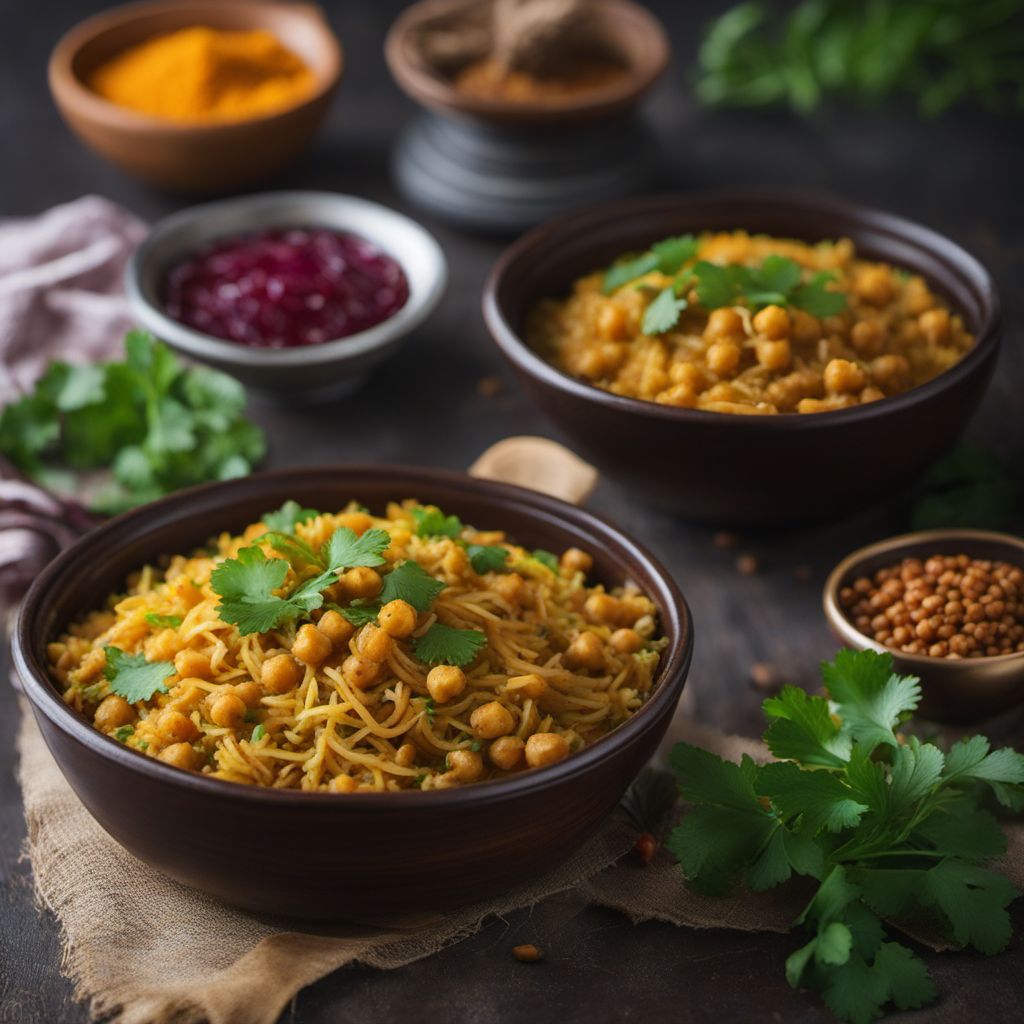
Recipe
Bangladeshi-style Chickpea Pilaf
Spiced Chickpea Pilaf: A Flavorful Delight from Bangladesh
4.5 out of 5
This recipe brings the essence of Bangladeshi cuisine to your plate with a delightful twist on the traditional Turkish dish, Nohutlu pilav. The Bangladeshi-style Chickpea Pilaf combines aromatic spices, tender chickpeas, and fragrant basmati rice to create a mouthwatering and satisfying meal.
Metadata
Preparation time
10 minutes
Cooking time
25 minutes
Total time
35 minutes
Yields
4 servings
Preparation difficulty
Easy
Suitable for
Vegetarian, Vegan (if ghee is substituted with vegetable oil), Gluten-free, Dairy-free, Nut-free
Allergens
N/A
Not suitable for
Paleo, Keto, Low-carb, High-protein, Whole30
Ingredients
In this Bangladeshi adaptation of Nohutlu pilav, we incorporate the distinct flavors and spices commonly found in Bangladeshi cuisine. The use of ghee, aromatic spices like cumin, coriander, and turmeric, and the addition of ginger and garlic give this dish a unique Bangladeshi twist. Additionally, the use of fragrant basmati rice instead of regular rice adds a subtle aroma and enhances the overall taste of the pilaf. We alse have the original recipe for Nohutlu pilav, so you can check it out.
-
2 cups (400g) basmati rice 2 cups (400g) basmati rice
-
1 cup (200g) canned chickpeas, drained and rinsed 1 cup (200g) canned chickpeas, drained and rinsed
-
1 large onion, finely chopped 1 large onion, finely chopped
-
3 cloves of garlic, minced 3 cloves of garlic, minced
-
1-inch piece of ginger, grated 1-inch piece of ginger, grated
-
3 tablespoons ghee 3 tablespoons ghee
-
1 teaspoon cumin seeds 1 teaspoon cumin seeds
-
1 teaspoon ground coriander 1 teaspoon ground coriander
-
1/2 teaspoon turmeric powder 1/2 teaspoon turmeric powder
-
1 cinnamon stick 1 cinnamon stick
-
4 cups (950ml) vegetable broth 4 cups (950ml) vegetable broth
-
Salt to taste Salt to taste
-
Fresh cilantro, for garnish Fresh cilantro, for garnish
Nutrition
- Calories (kcal / KJ): 380 kcal / 1590 KJ
- Fat (total, saturated): 10g, 5g
- Carbohydrates (total, sugars): 65g, 3g
- Protein: 8g
- Fiber: 4g
- Salt: 1.5g
Preparation
-
1.Rinse the basmati rice under cold water until the water runs clear. Soak the rice in water for 30 minutes, then drain.
-
2.In a large pot, heat the ghee over medium heat. Add the cumin seeds and cinnamon stick, and sauté for a minute until fragrant.
-
3.Add the chopped onions and cook until golden brown.
-
4.Stir in the minced garlic and grated ginger, and cook for another minute.
-
5.Add the ground coriander, turmeric powder, and drained chickpeas. Cook for 2-3 minutes, allowing the flavors to meld together.
-
6.Add the soaked and drained basmati rice to the pot and gently stir to coat the rice with the spices.
-
7.Pour in the vegetable broth and season with salt. Bring to a boil, then reduce the heat to low, cover the pot, and simmer for 15-20 minutes or until the rice is cooked and the liquid is absorbed.
-
8.Remove from heat and let the pilaf rest, covered, for 5 minutes.
-
9.Fluff the rice with a fork and garnish with fresh cilantro before serving.
Treat your ingredients with care...
- Basmati rice — Rinse the rice thoroughly to remove excess starch and soak it before cooking to achieve fluffy and separate grains.
- Cumin seeds — Toasting the cumin seeds in ghee before adding other ingredients enhances their flavor.
- Ghee — If you prefer a vegan version, substitute ghee with vegetable oil for a similar taste.
Tips & Tricks
- For added flavor, you can sauté some whole spices like cardamom pods, cloves, and bay leaves along with the cumin seeds.
- To make the pilaf more nutritious, you can add vegetables like peas, carrots, or bell peppers.
- Serve the pilaf with a side of raita (yogurt sauce) or a refreshing cucumber salad for a complete meal.
- Leftover pilaf can be refrigerated and enjoyed the next day. Reheat it gently in a pan with a splash of water to retain its moisture.
- Experiment with different spice combinations to customize the flavors according to your preference.
Serving advice
Serve the Bangladeshi-style Chickpea Pilaf as a main course accompanied by a side of raita (yogurt sauce) and a fresh salad. It pairs well with naan bread or roti.
Presentation advice
Fluff the pilaf with a fork before serving to showcase the separate grains of rice. Garnish with fresh cilantro leaves for a pop of color. Serve it in a decorative platter or individual bowls for an appealing presentation.
More recipes...
For Turkish cuisine » Browse all
For Bangladeshi cuisine » Browse all

Panta Ilish with Spiced Rice and Fermented Fish
Savor the Essence of Bangladeshi Cuisine with Panta Ilish Delight

Bakarkhani - Flaky and Fragrant Bangladeshi Delight
Saffron-infused Bakarkhani: A Taste of Bangladeshi Elegance

Bangladeshi Peach Melba
Tropical Delight: Bangladeshi Peach Melba with a Spicy Twist
More Turkish cuisine dishes » Browse all

Perde pilavı
Perde Pilaf
Perde pilavı is a traditional Turkish rice dish that is often served during special occasions such as weddings or religious holidays. It is a...

Semsek
Semsek is a traditional Turkish pastry that is filled with cheese and herbs. It is a popular snack that is often served with tea.
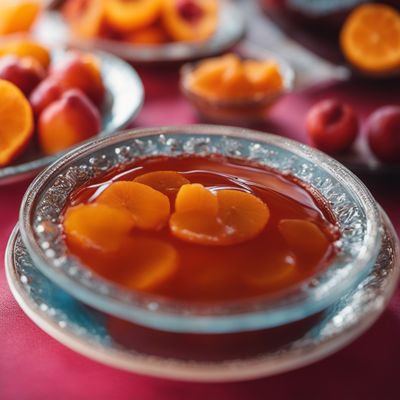
Hoşaf
Hoşaf is a traditional Turkish fruit compote made from dried fruits and sugar. It is a sweet and refreshing dessert that is perfect for hot summer days.
More Bangladeshi cuisine dishes » Browse all
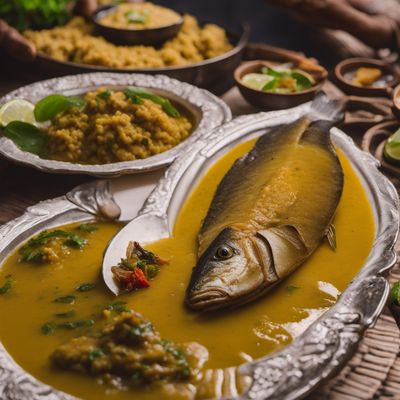
Shorshe ilish
Hilsa in mustard sauce
Shorshe ilish is a traditional Bengali dish made with hilsa fish and a mustard sauce.

Jhalmuri
Jhalmuri is a popular street food snack in India, made from puffed rice, vegetables, and spices. It is a light and flavorful snack that can be...

Golpi
Golpi is a traditional Iranian dish made with lamb and a variety of herbs and spices. It is a flavorful and aromatic dish that is often served as...
